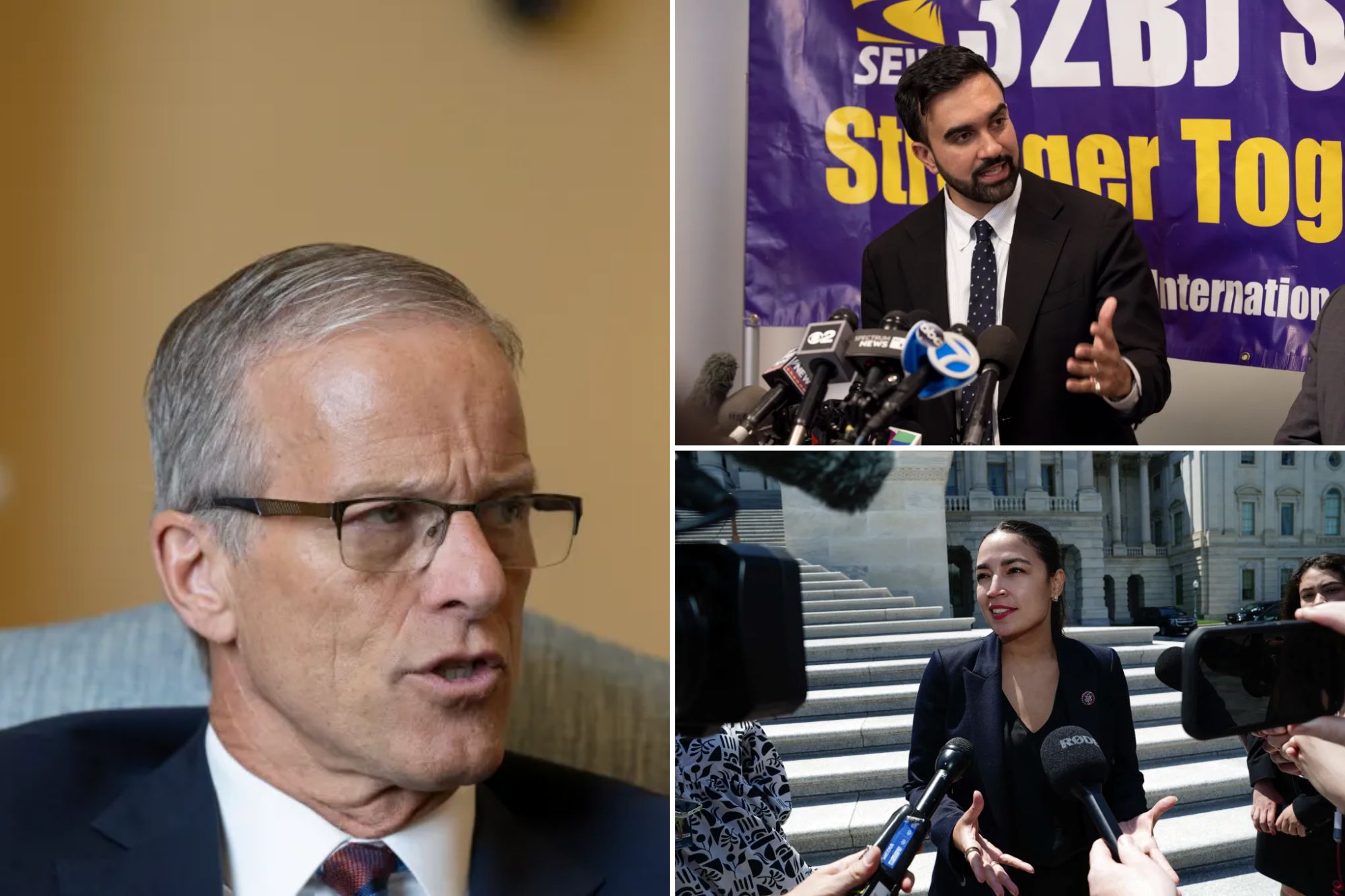Senate Majority Leader John Thune (R-SD) issued a stark warning recently, suggesting that entrenched Democratic Party figures face “big trouble” if Zohran Mamdani secures victory in the upcoming New York City mayoral race. This bold pronouncement underscores a growing unease within political circles regarding the Democratic Party’s evolving ideological landscape and its potential national ramifications.
Thune, a seasoned voice on Capitol Hill, emphasized that Mamdani, should he emerge as the new “face of the Democrat Party nationally,” would signal a troubling shift “so far left to where the American people are, at least most places.” This sentiment highlights a broader Republican narrative that positions progressive victories as indicators of a Democratic Party increasingly out of touch with mainstream voters, particularly beyond traditional liberal strongholds.
The South Dakotan’s concerns are not isolated, resonating with anxieties over a potential leftward drift within the Democratic Party. The prospect of Mamdani, a far-left Empire State legislator, triumphing over established figures like incumbent Mayor Eric Adams and former Governor Andrew Cuomo is described by Thune as “scary,” prompting him to lament, “I feel for the people of New York City.”
This political earthquake in New York City is viewed by some as symptomatic of deeper fissures within the Democratic Party, particularly a rebellion from activist and donor bases that has propelled figures like Alexandria Ocasio-Cortez into increasingly prominent roles. This internal strife poses significant challenges for party leadership as they navigate an electorate often characterized by diverse and sometimes conflicting demands.
Adding to the Democratic Party’s complexity is the precarious position of Senate Minority Leader Chuck Schumer (D-NY). Rumors of a potential primary challenge from his left have gained considerable traction, fueled by instances where Schumer has faced criticism from his progressive base, such as his bipartisan effort to avert a government shutdown. Such actions, while perhaps seen as pragmatic, often risk alienating the very activists who can mobilize significant opposition.
Thune analyzed Schumer’s dilemma, noting that while the Democratic leader “wisely took the move to keep the government open,” he “got lit up for it by his political base, which is the challenge he has.” This observation underscores the delicate balancing act faced by Democratic leaders attempting to govern effectively while appeasing an increasingly vocal progressive wing, suggesting that this internal tension is “the politics of the moment on the Democrat side of the aisle.”
The broader implications of these intra-party dynamics extend beyond New York City, potentially shaping national political discourse and electoral strategies. The rise of more progressive candidates in local and state elections could force the national Democratic Party to recalibrate its platform and messaging, potentially alienating centrist voters in key swing states.
Amidst these political maneuverings, Thune also touched upon the critical issue of gun control, noting the “lot of conversations” generated in Congress following a recent tragic incident in Midtown. While distinct from the political shifts within the Democratic Party, this discussion further illustrates the complex array of challenges and debates occupying lawmakers on Capitol Hill.
Ultimately, Thune’s commentary serves as a significant warning shot, suggesting that the Democratic Party stands at a pivotal juncture. The outcome of the NYC mayoral race and the internal power struggles within the party could profoundly reshape its identity and electoral viability on both local and national stages for years to come.






Leave a Reply